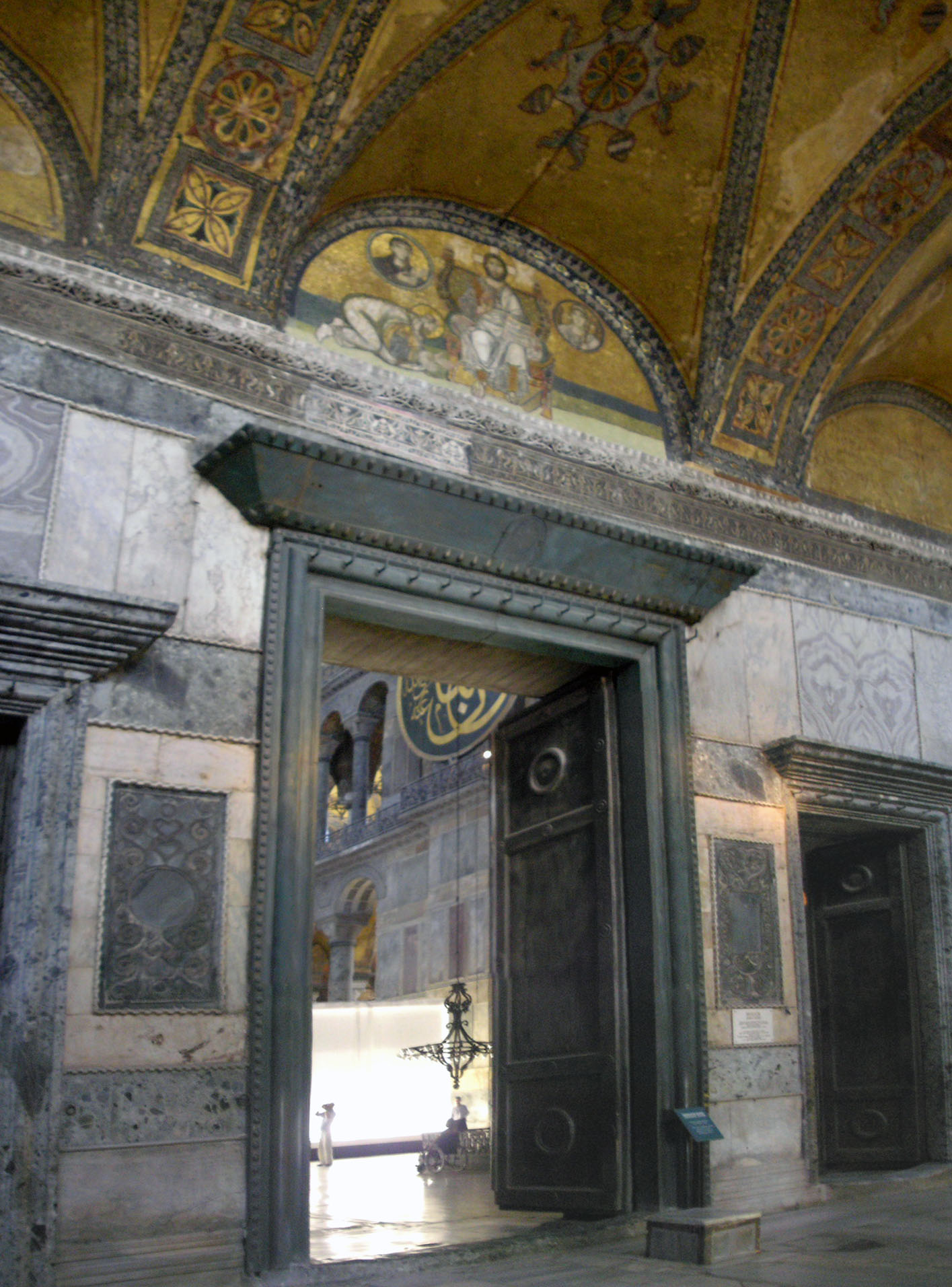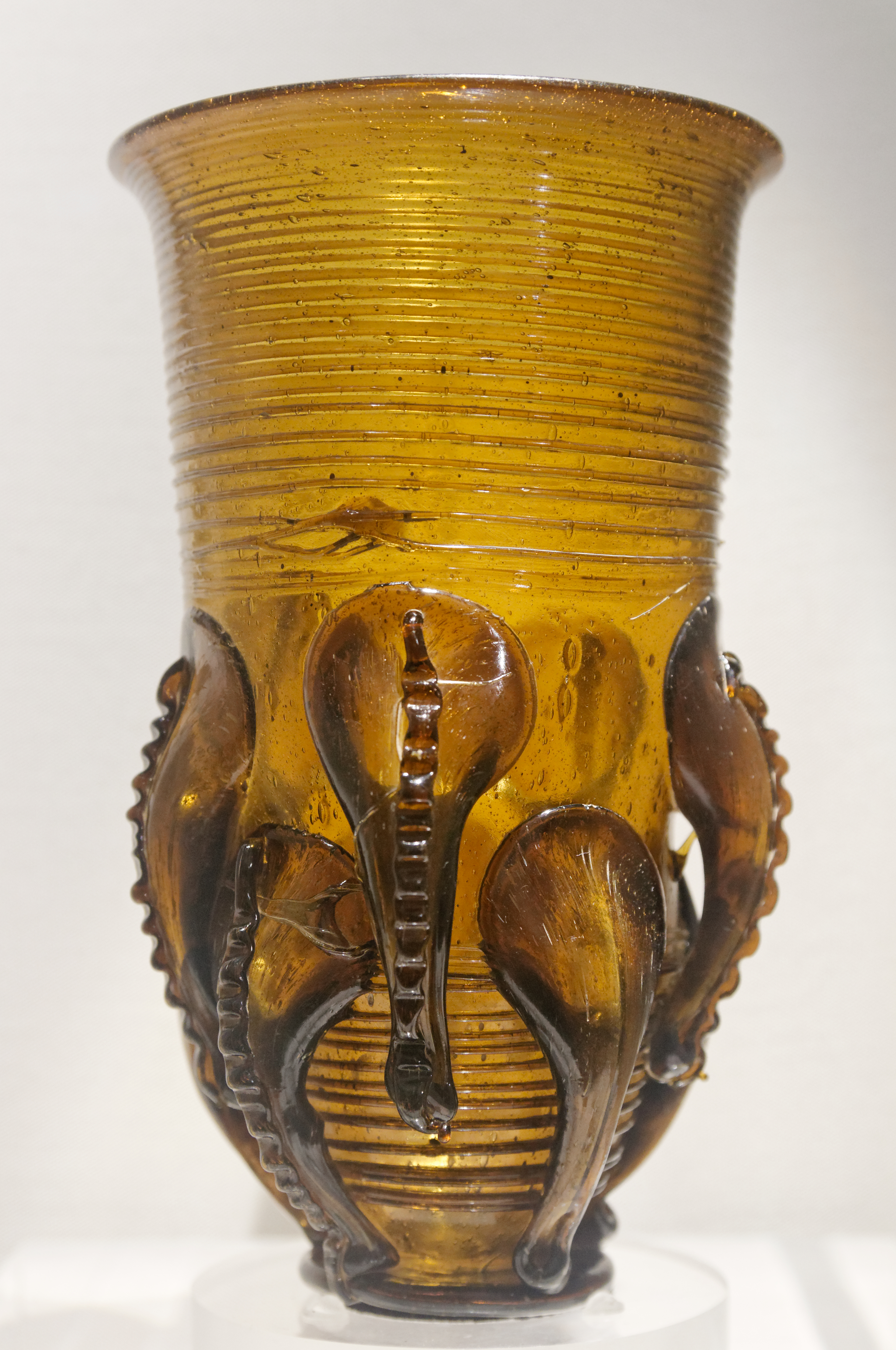.jpg) |
| A replica of the Sutton Hoo Helmet |
 |
| The Imperial Gate of the Hagia Sofia showing 9th century mosaics over the door |
To start out, the
Dark Ages weren’t dark.
 |
| earliest known icon of Jesus from Saint Catherine's Monastery in the Sinai, c. 6th - 7th centuries |
Over in England,
things weren’t going quite as well at first. When Rome removed her legions,
England fell prey first to the Saxons, then the Vikings. The native Britons intermarried
with the newcomers, or withdrew into the perimeters; into Wales, Scotland and
Ireland. Here, missionary work was staged in an attempt to convert the
invaders. It wasn’t unsuccessful.
 |
| Elaborate buckle from the Sutton Hoo burial 6th - 7th century |
 |
| In this shoulder clasp from the Sutton Hoo burial each inlaid garnet was backed with carefully worked gold foil to scatter the light, 6th - 7th century |
The art from the
Dark Ages is breath-taking. Pieces recovered from the Sutton Hoo burial mound
are so intricate they would have required four times magnification to create.
Alfred the Great, one of England’s greatest kings was a world traveller (he
went as far afield as Rome) and his court flocked with scholars. Admittedly, he
learned to read and write in later adulthood, but he spent quite a bit of his
time translating the Bible. He encouraged education and reformed the legal
system and was really the first King of All England (that excludes Scotland, Wales and the Danelaw). He even started the Navy.
 |
| The filigree work on the Alfred Jewel 9th century |
Things were going
along splendidly during the Dark Ages, until, at the end of the 10th
century and the beginning of the 11th, misplaced Vikings, named
Normans, busied themselves in conquering much of France and Italy. One, named
William the Conqueror, even dropped in on England. Things would never be the same again.
When the Normans happened to Europe, learning took a major setback. Art and culture suddenly seemed on hold as Norman regimentation moved in with massive stone castles and suppression by annihilation. Anyone who could, built a castle and huddled down to weather the storm. But despite the battles and bloodshed, our old friend Enlightenment didn't stay long in the background.
 |
| Anglo-Saxon claw beaker 6th - 7th centuries |
Stay tuned for how the Middle Ages weren't backwards...
~Psyche
Note: In nearly all my posts, I've included links to pages with more information on the subjects I've mentioned. I hope you have been finding these helpful. :)
Note: In nearly all my posts, I've included links to pages with more information on the subjects I've mentioned. I hope you have been finding these helpful. :)
Oh, yes, very helpful! I've now read the whole Wikipedia article on Sutton Hoo, and it's very fascinating. I'd love to visit all these places and see the artifacts in person :D
ReplyDeleteOh I'm so glad! And I think the Sutton Hoo burial is absolutely amazing! They're are also many hoards that are worth looking up, like the Staffordshire Hoard, which shows Anglo-Saxon craftsmanship.
Delete